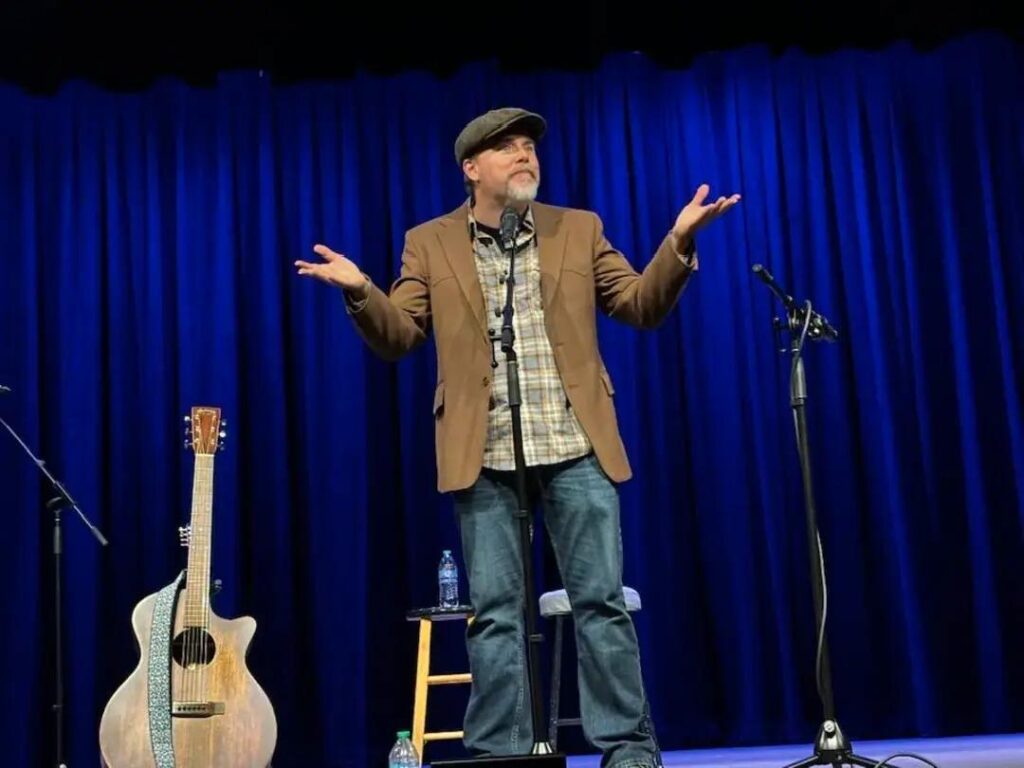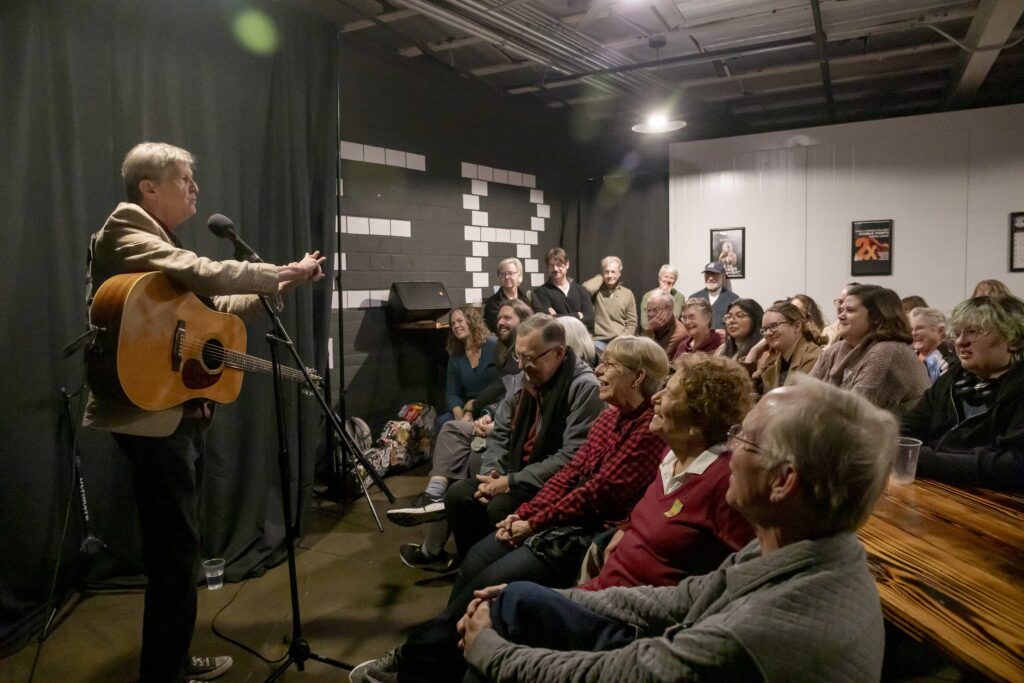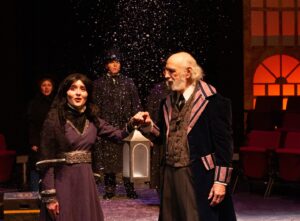by Alan Jozwiak
In The Arabian Nights, Scheherazade told tale after tale for 1,001 nights. After experiencing the 2025 Cincinnati Storytelling Festival, at Know Theatre, it felt like Scheherazade was visiting the Queen City. Storytellers Paul Strickland, Charlotte Blake Alston, and Bil Lepp told a range of stories that were so diverse that it would be hard to summarize each one.
Instead, I will give a general overview of what it’s like to attend a storytelling festival and highlights from each storyteller.

The Cincinnati Storytelling Festival Experience
This was my first storytelling festival, so I wanted to explain what it’s like to attend a storytelling festival. Here are the highlights:
- For storytelling festivals, the tickets are swatches of fabric that are pinned to your clothing. Some people who attend a lot of festivals save these swatches to create a blanket or quilt.
- A storytelling session is theme-based (such as Spooky Stories or Twisted Tales) and two to three storytellers will have a set within that session where they tell one to three stories. Most nights had two sessions a night.
- The range of stories within a session can vary widely. In the Old Tales Told New session, the storytellers told several Jack stories, the same Jack best known from Jack and the Beanstalk. One story has Jack paired up with a bull with magic powers. Another ties Jack into the origins of the Jack O’Lantern resulting from Jack tricking the Devil. Finally, there was a rap about Louis Armstrong and a song about John Henry battling the steam-powered rock drill.
- The Cincinnati Storytelling Festival is an intimate affair. With only three storytellers, there were no competing sessions. It is possible to hear all sessions. Being intimate also means that it is possible to talk to the storytellers during the dinner break between sessions and buy their merch.
Festival Highlights
I mentioned above that there were only three storytellers, but that is not quite true. True Theatre also had a session where they presented some of the best stories from the last few seasons of telling true stories.
These stories are all outstanding. One deserves special attention–Ruby Downie’s story about learning she could hear. Downie grew up in a deaf household and eventually became deaf herself. Her description of understanding the idea of sound and answering a telephone for the first time was very funny and truly unforgettable.
Downie is part of the Cincinnati State Interpreter Training Program (ITP) for the deaf, so she signed her story as a fellow interpreter spoke the words for her.

Strickland
For storyteller Paul Strickland, I was particularly impressed by what he calls his “reupholstered folktale” of the June Apple tree. Partly because of the story itself (it is a real spooky story) and also because of the way Strickland learned of the story. Strickland heard it from an old Kentucky storyteller by the name of Uncle Blessing, making this tale one which can engage a new generation of audiences.
This is a variation of the Grimm Juniper Tree story and has all the gruesome details you would expect from a tale which originates in Germany. There is decapitation, the consumption of dead relatives, and a miraculous ending where justice is served up. It really is a wild tale well worth listening to.
Alston
For storyteller Charlotte Blake Alston, I was really struck by her favorite story of the Nanabolele from the Basotho people of Lesotho. Not only is it a really good story, but has as its protagonist an orphaned girl who tries to do right by her brothers as they go through their manhood ceremony. She finds a way to craft for them shields made from the shining skin of the Nanabolele, a tribe of people who live in a far away village. The call and response Alston engages with the audience at one point of the story added to the experience.
Lepp
For storyteller Bil Lepp, his stories tell some pretty tall tales about his life growing up in the fictional town of Half Dollar, West Virginia. I really enjoyed his story about how he and his friends play rodeo by dragging a supposedly abandoned washing machine down a country road. This leads to the heart of the story where he and his friend Skeeker have to clean out a farmer’s old barn. A bunch of chickens meet their end in an unusual way after pecking through the discarded items from the barn.
This story sounds rather convoluted, but that is part of Lepp’s style. He is a master of the misdirect, taking his listeners on a series of seemingly unconnected incidents that gel together at the end.
Overall, the Cincinnati Storytelling Festival is one of those unappreciated gems within the Cincinnati performing arts firmament. While small, it has a large impact with the high caliber of storytelling it fosters. Several of the shows I saw this year were sellouts. I hope the move to the Know Theatre makes the entire event a sell-out event for next year.
Stay Tuned for Next Year’s Storytelling Festival
Don’t miss this unique and wonderful journey into storytelling magic when it comes back in 2026. Founded in 2020, is a weekend event featuring professional storytellers from a variety of backgrounds and traditions. This year’s event was held at Know Theatre, in the heart of OTR, 1120 Jackson St., Cincinnati, Ohio on November 13-15, 2025.
Here is the link to their website: https://www.cincystoryfest.com/ so you can get on the mailing list and learn more. It is definitely worth the time and effort to attend.





